Day 3 of a three day Early Summer Tour today, our last day. It was a mostly bright day with some sunny periods and although there were some ominously threatening dark clouds approaching around the middle of the day, they passed by to the south of us and we didn’t get any rain.
There had been a Rose-coloured Starling at Kelling yesterday and news came through that it was still present this morning, so we drove over there first. As we set off down the track, we could hear Chiffchaffs singing in the hedge and an Orange-tip butterfly fluttered around above us.
Some people walking back told us that the Rose-coloured Starling was currently in view, so we quickened our pace down to the gate beyond the copse. There were a couple of people already there who quickly put us onto it and we soon found ourselves watching a rather smart pale powder-puff pink-tabarded Rose-coloured Starling perched on the wires at the back.
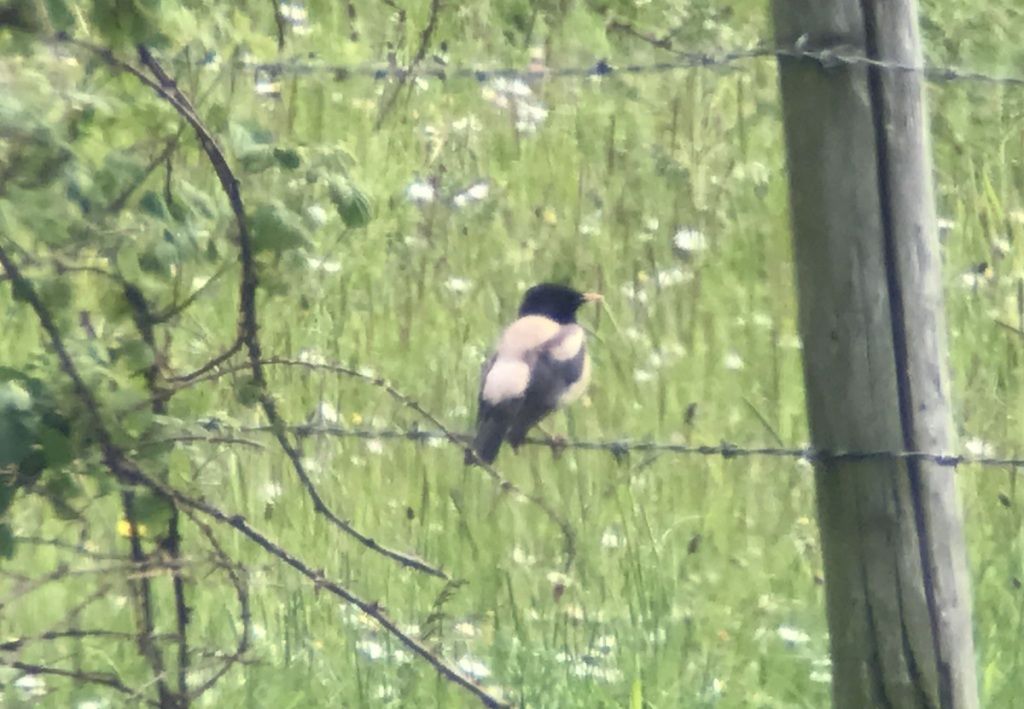
We walked a little further down, where we could see over the brambles from the bank the other side of the track and the views of the Rose-coloured Starling were slightly closer. It spent some time just perched on the wires looking slightly lifeless, but then suddenly dropped down to the short grass below and started walking around. Then it took off, flying out to join the large flock of regular Starlings which were feeding on the Water Meadow, dropping down into the tall rushes out of view.
There were lots of Brown Hares in the field beyond and one on the ridge of the field behind us.

We took the disappearance from view of the Rose-coloured Starling as our cue to move on. We continued on down the track to the Water Meadow. A Common Whitethroat flew across the track into the brambles. A Sedge Warbler was singing in the yellow-green alexanders on the corner.

There was nothing of particularly note on the Water Meadow pool, one of the regular pair of Egyptian Geese, plus a few Mallard and Gadwall and a couple of Moorhen. More unusually, we looked up over the ridge to see a Fulmar flying towards us over Weybourne Camp. It banked round over the gun emplacements, and headed back out to sea.
We decided to move on, and drove up to check out one of the local heaths. As we walked out of the car park, we could hear a Bullfinch calling and had a quick glimpse as it flew across the path. As we came out of the thick blackthorn, we heard a Nightjar churring briefly. They will churr sometimes in the daytime, but they are better looked for at dusk, as we had seen last night. Some Long-tailed Tits were calling in the trees, and we saw one as it flew across. A Goldcrest was singing too, but there were few warblers singing now. The nearby pines were rather quiet, apart from a Siskin which called overhead, but was not seen.
There was a large group of cyclists chatting on the track ahead of us, so we turned onto a side path. We had hoped it would be quieter, but there were several walkers and dog walkers here too and no sign of the hoped for Woodlarks. About half way along, we heard a burst of Dartford Warbler singing. We stopped to listen more carefully, and try to work out where exactly the sound was coming from, but it had gone quiet. We scanned the tops of the gorse bushes but there was no sign of it. We walked on a bit further, still listening, then decided to turn back. A couple of Green Hairstreak butterflies were flying around the emerging bracken fronds.

The cyclists had gone now, so we walked on along the main track and took another smaller path out into the middle of the heath. A family of Stonechats were flicking around on the gorse ahead of us here, male, female and at least two streaky juveniles. There were plenty of Linnets too. We checked another favoured spot for a Woodlark but drew a black again.
As we cut back round, suddenly a small bird flew out of the gorse ahead of us. It looked dark slate grey, with a noticeably long tail, a Dartford Warbler! It landed in a young pine tree, where we could just see it moving around in the lower branches, then dropped down into the gorse below. We walked on round on the path and positioned ourselves looking at the clump of gorse into which it had disappeared. Luckily one of the group was looking the other way, as it had obviously moved and was now perched on a low gorse bush right by the path. It flew across and landed on the top of a larger clump where it remained for several seconds, giving us a great view.
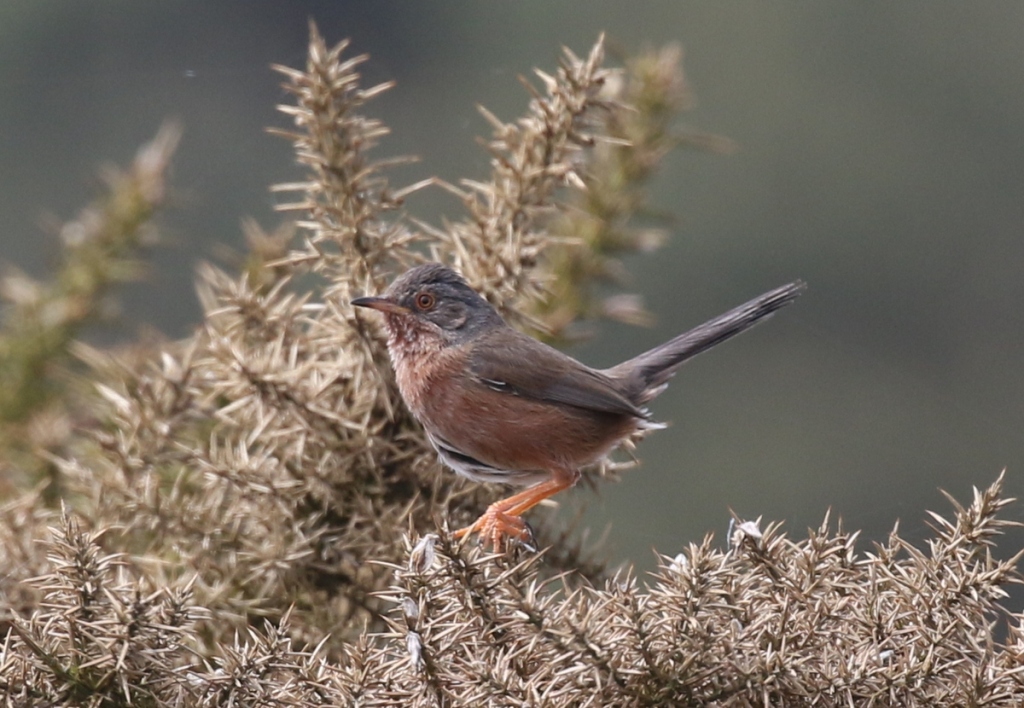
We decided to leave the Dartford Warbler in peace We set off back along the path but we didn’t get far before we flushed a Woodlark from the edge. We could see its short tail as it flew up, and we watched as it circled round and landed in the top of a pine tree a bit further over. We got it in the scopes and could see it had food in its bill, before it flew down to the ground just where we had been looking for it earlier.
By the time we got back round, the Woodlark was back up in the top of the pine. It dropped down again, and we could just see it walking around on the ground. Then it flew up and landed on a nearby fencepost, giving us a great view. It was already after midday, so we walked back towards the car park. Another Woodlark circled overhead calling on the way.
We drove down to Cley, and as we dropped back down to the main road, a Grey Partridge ran off the verge by the houses, ran across the road ahead of us and onto the old parking area the other side. An odd place to see one! The NWT car park was strangely full of cyclists. Apparently there was a big cycle event round Norfolk today, but it seemed odd that they had been allowed to take over the car park as one of their stops on one of the busiest weekends of the year. Speaking to the staff in the Visitor Centre it didn’t sound like they had even asked for permission to use the site.
Thankfully, it looked like the cyclists were starting to disperse and we managed to find a picnic table as several of them left. While we were eating, a Great White Egret flew across over the reserve – we could see its long legs and slow leisurely wingbeats. It was overtaken by a Little Egret, which was a great way to see the size difference.
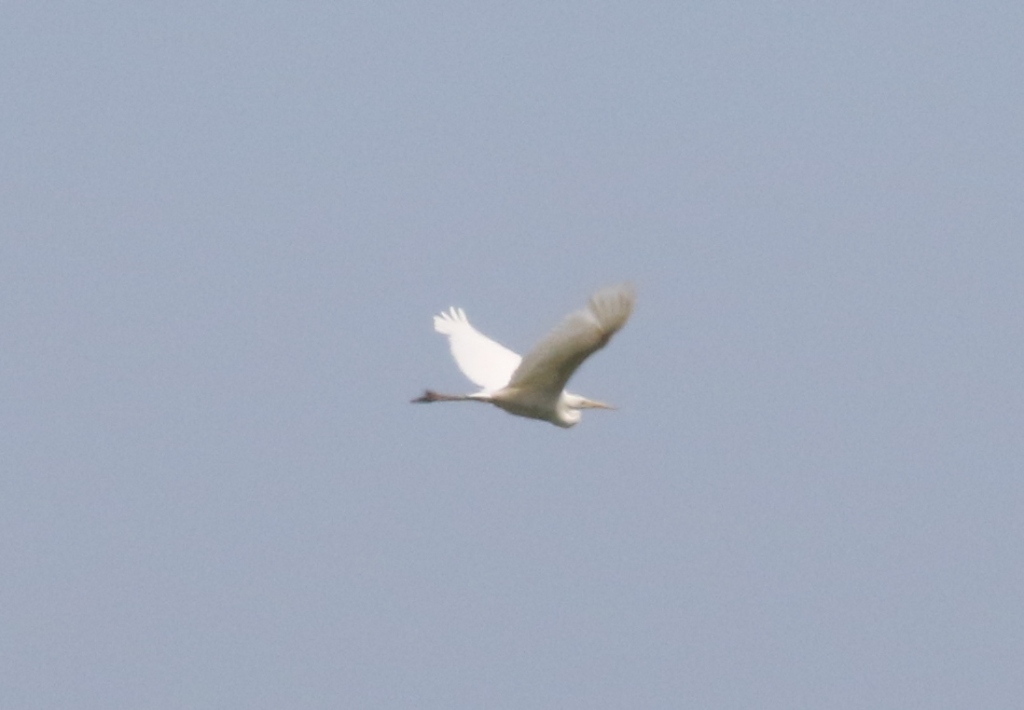
After lunch, we planned to have a walk up the East Bank. There were some threatening dark clouds approaching from the south, so we decided to drive to Walsey Hills and walk from there, so we wouldn’t be too far from the minibus in case it started to rain. There were just two Tufted Ducks today on Snipes Marsh.
As we started to walk up the East Bank, we could hear the Yellow Wagtail singing. It took a bit of finding in the long grass, partly because it seemed to mostly have its green back to us. When it finally turned round it was much more obvious – its bright canary yellow head and breast standing out. We had some good views of it through the scopes.
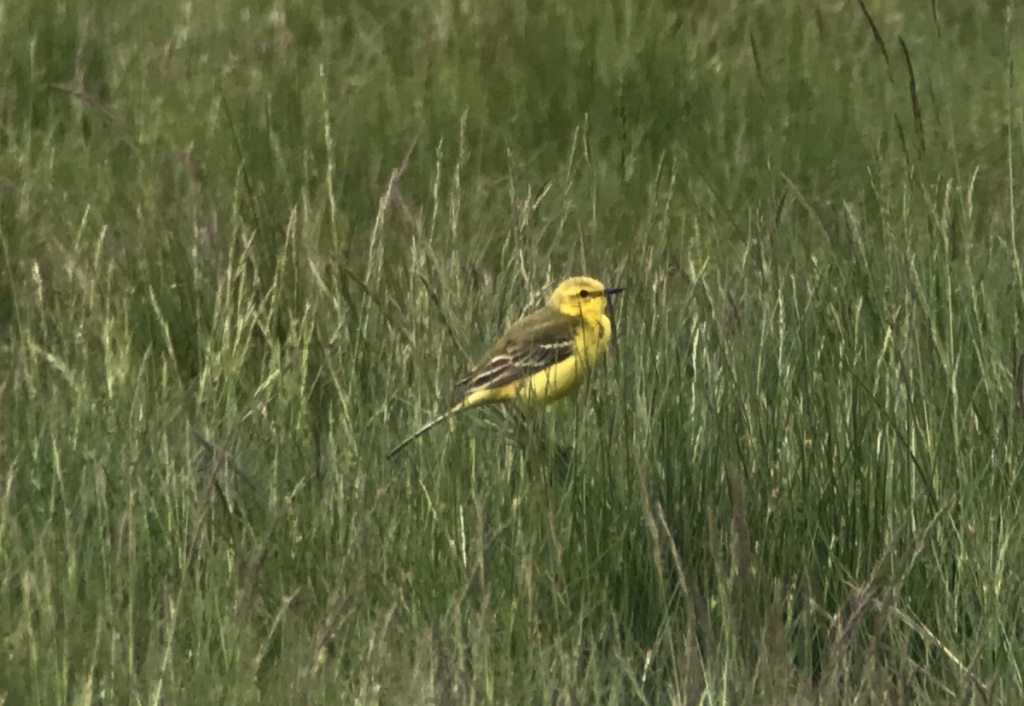
There were several Cormorants drying their wings on the islands on Pope’s Pool and a throng of loafing immature Great Black-backed Gulls. There were several Avocets too. We could hear Bearded Tits calling behind us, but we couldn’t see them.
News came through now that a Red-backed Shrike had just been found not far away, inland at Aylmerton. Even better, it was a smart male. We didn’t have a lot of time available, and we were not sure exactly where it was or how long it would take us to see it, so we decided to head over there immediately. As it was, we managed to get precise directions while we were on the way and it wasn’t too far to walk after we got there and we found ourselves watching the stunning male Red-backed Shrike.
The Red-backed Shrike was perched in a small oak tree sticking out of a hedge between two fields, next to a footpath. It kept making small sallies out either side, catching insects, coming back to the same tree of one a bit further along. We had a great view of it through the scopes, rusty red-backed, grey-headed with a black bandit mask, and pink on the breast.
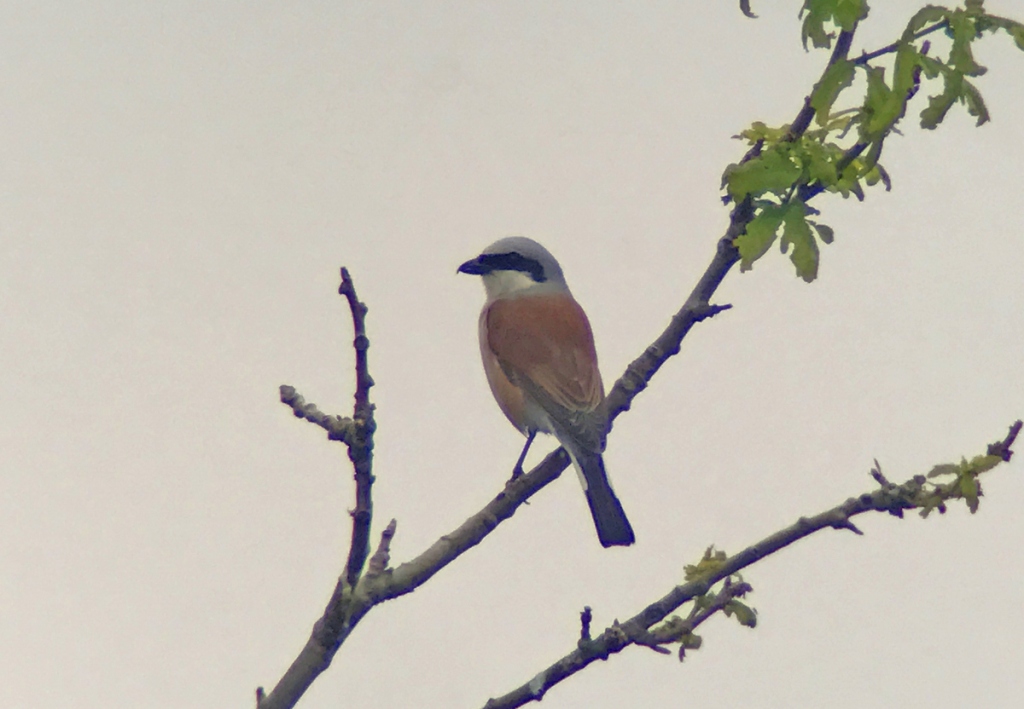
The dark clouds had passed over, but it was still cloudy, warm and muggy. Lots of Common Swifts, Sand Martins and House Martins, were hawking for insects low over the fields too. After watching the Red-backed Shrike for a while, we decided to head off back.
Cutting across inland, we made good time on our way back to Wells and still had about 45 minutes before we were due to finish, so we stopped at the pools just east of town. A pair of Egyptian Geese were out on the grass nearby. A Grey Heron flew over the parking area, some distance from the pools, but still a squadron of Avocets flew out after it, and one continued to chase it away over the field beyond.
Down the track, we stopped to scan the pools and could see why. There were several families of cute fluffy juvenile Avocets, being defended by their parents. There were three darker brown small juvenile Redshanks too, the first we have seen here this year. The juvenile Lapwings are much more advanced, and are now well grown. There was a pair of Shelducks with a family of shelducklings out in the middle of the water too. All the parents were very aggressive, chasing away any potential predators.

There were some other waders on here too. A single Knot, in grey non-breeding plumage, was the first we had seen on the three days, a last minute addition to the list. Two Little Ringed Plovers were distant at first in the heat haze, but one came closer, so we could see its golden yellow eye ring through the scopes.
A Marsh Harrier, a pale male circled over the field beyond, hunting. As we walked back a short while later we watched it come in over the pools with food in its talons. The female was following, presumably expecting to be the recipient of the prey, but the male flew on and landed in the field the other side. For some reason, it was not going to give it up.
It was time now to call it a day and head on to Wells to drop people off. It had been a very exciting three days, with some great birds and a good selection of other summer wildlife too.
















